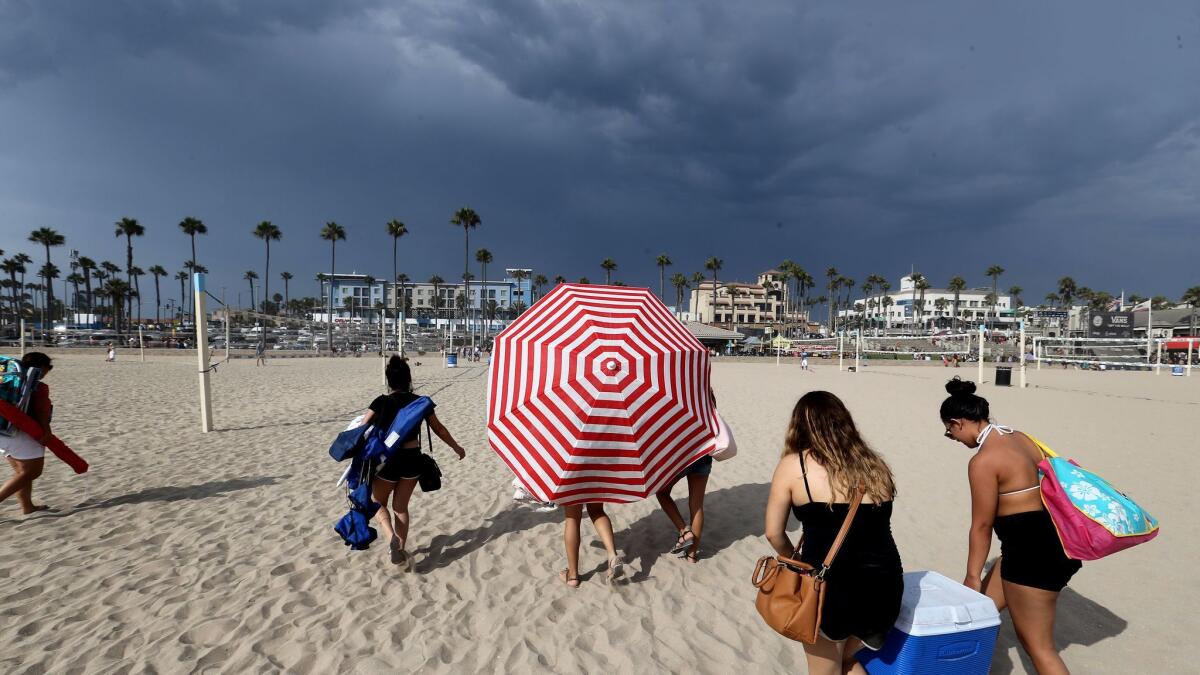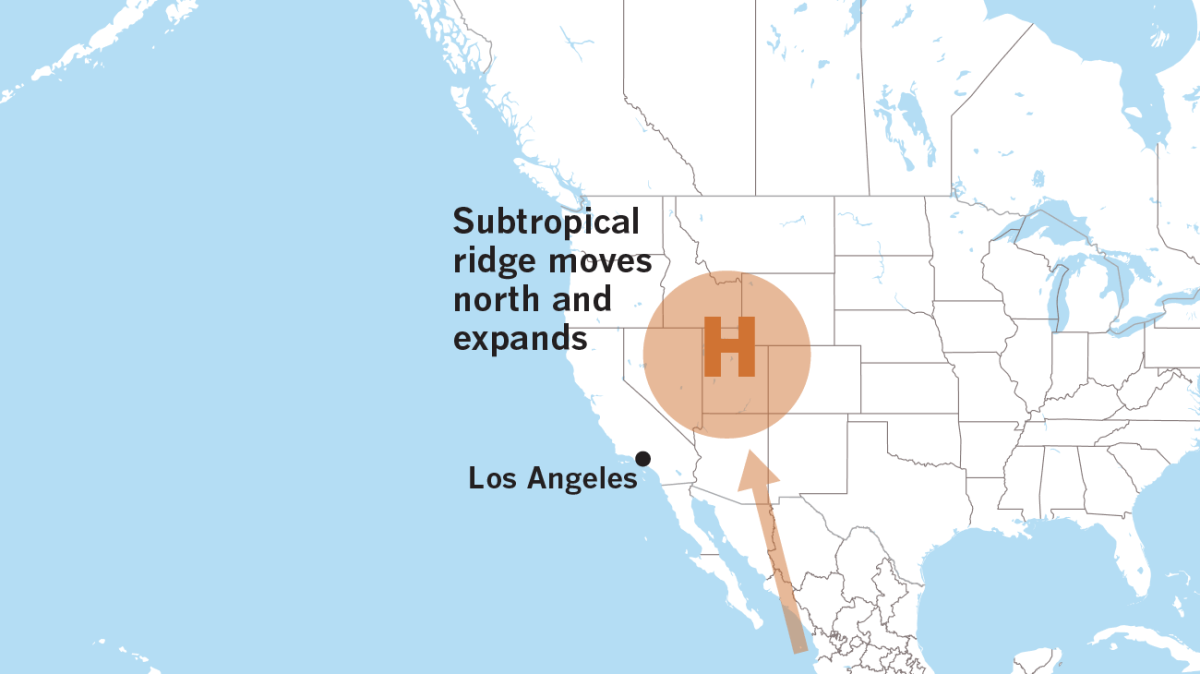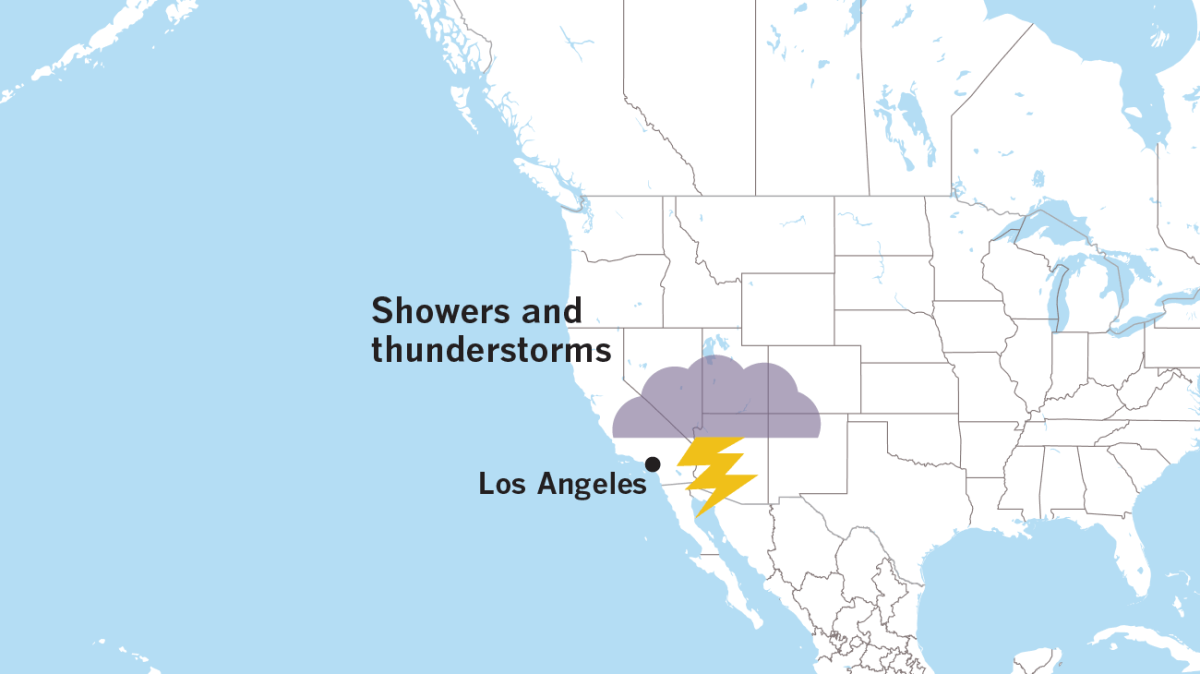What’s behind Southern California’s summer rain and thunderstorms?

Anyone who was around last winter knows that the song got it wrong: It does indeed rain in Southern California. Not only that, it can rain in the summer in Southern California. That rain is courtesy of a North American monsoon that usually fuels showers and thunderstorms in the inland mountains and deserts. At the very least, the monsoonal flow gives Los Angeles a sticky, tropical feel, making what can be a hot semi-desert uncharacteristically muggy. But the showers and thunderstorms occasionally spill over into the Los Angeles Basin, sometimes reaching all the way to the coast. Here’s a look at the dynamics of the monsoon.
Late spring and early summer
In June, a subtropical ridge of high pressure is usually aloft over Mexico. High pressure slowly rotates clockwise in the Northern Hemisphere. It is dry and sinks in the atmosphere. As it sinks, it heats up — and the stronger the high pressure, the more it produces heat.

July through September
During the summer months, the high pressure shifts northward and expands dramatically, bringing seasonal heat to the Southwest deserts and parts of Southern California.

Monsoonal moisture
Circulation around the high pressure pulls subtropical or monsoonal moisture up from the Gulf of California and the Gulf of Mexico, increasing humidity in the Southwest. Currently, it is also sending unusual heat into the Pacific Northwest as the jet stream is well to the north in Canada.

Summer showers and thunderstorms
Subtropical moisture fuels showers and thunderstorms across the Southwest and into the southern Rockies. In Southern California, the wet weather is mostly confined to the deserts and mountains, and buildups of cumulus clouds over the mountains can often be seen from the coast. Sometimes monsoonal showers and thunderstorms spill over from the mountains into the L.A. Basin. Torrential rain from thunderstorms can cause flash flooding, and dry lightning strikes can spark wildfires.

Sources: Bill Patzert, NASA Jet Propulsion Laboratory;
ALSO
10-acre wildfire burning near UC Berkeley triggers voluntary campus evacuations
A 5% rent increase would push 2,000 Angelenos into homelessness, study warns
A wet winter makes some California hikes more treacherous than usual
Sign up for Essential California
The most important California stories and recommendations in your inbox every morning.
You may occasionally receive promotional content from the Los Angeles Times.








